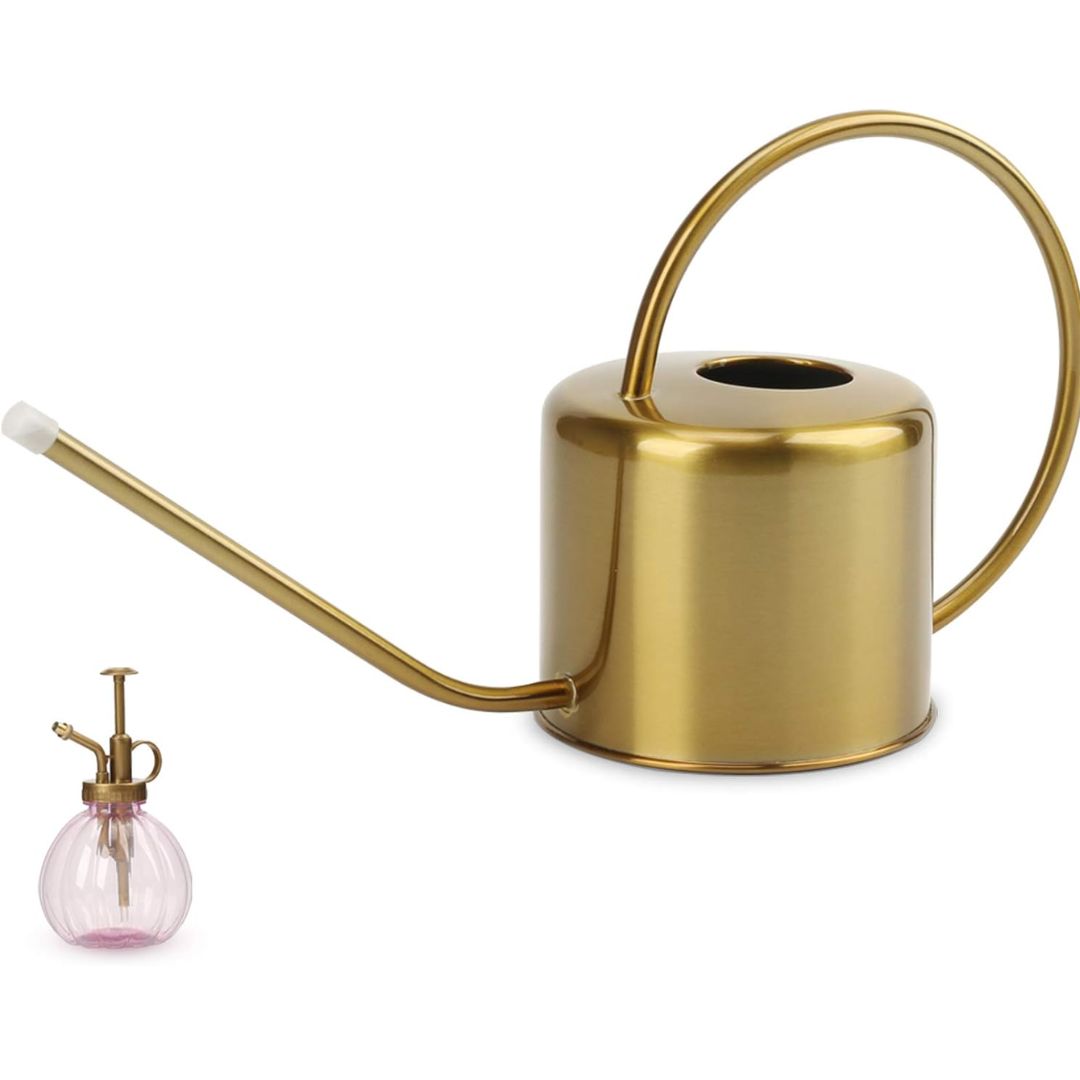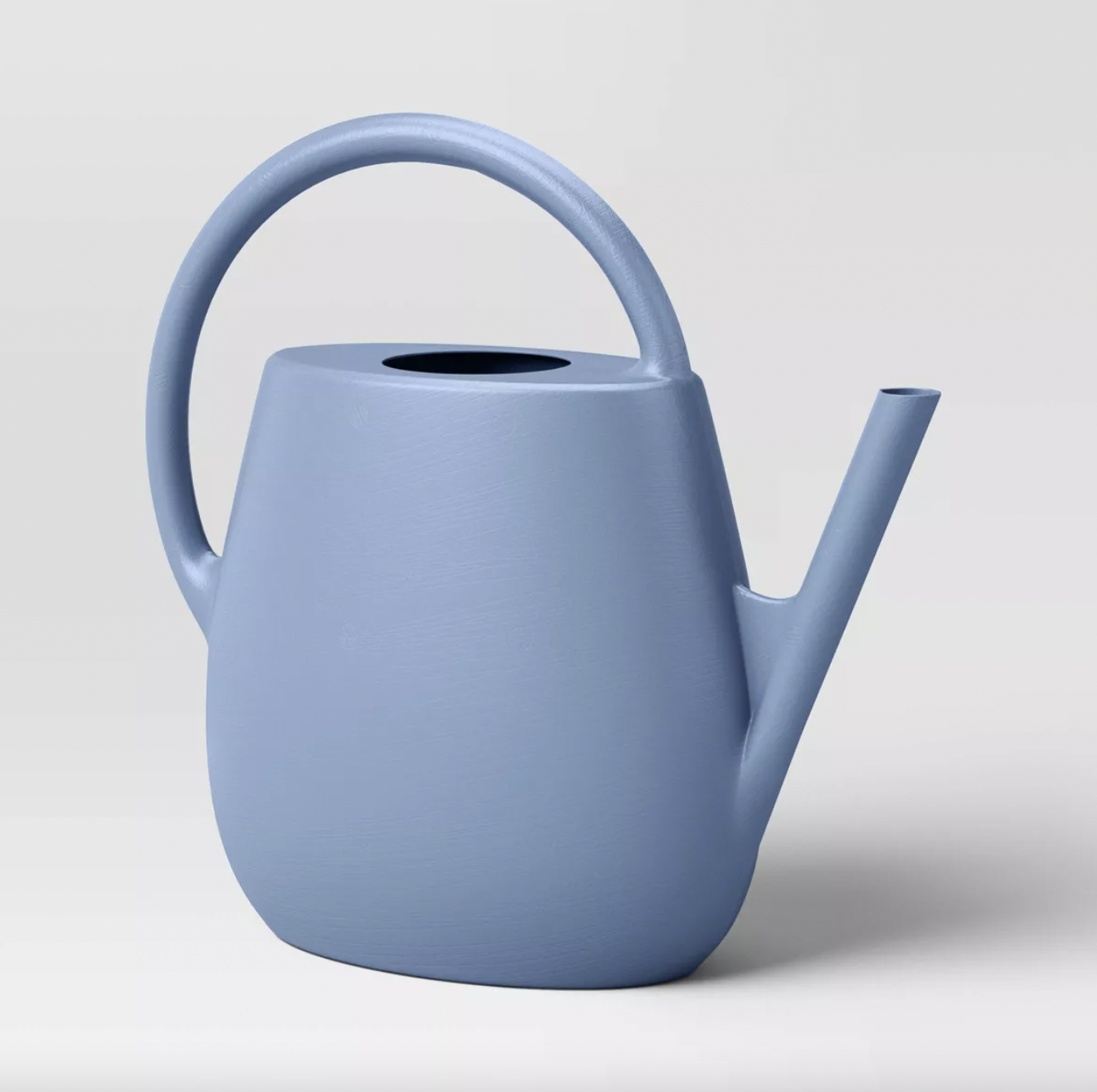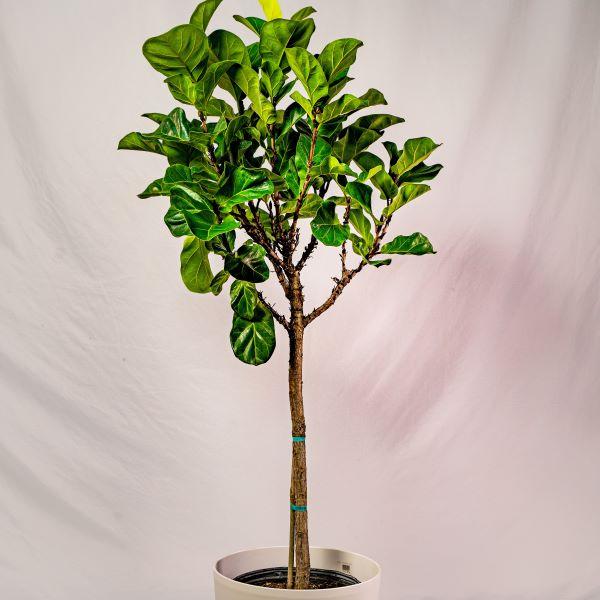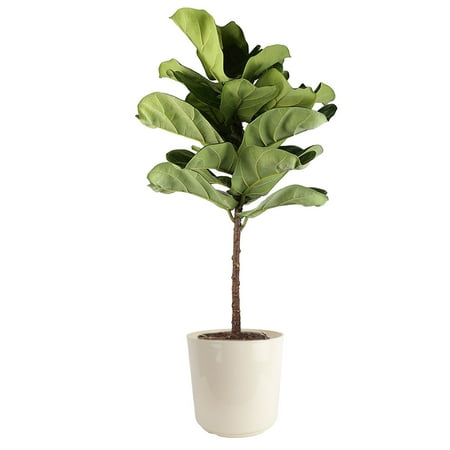Why Is My Fiddle Leaf Fig Drooping? Plant Experts Share 5 Common Causes —And Easy Tips to Revive Your Plant
This architectural houseplant offers brilliant displays of foliage, but limp leaves are a tell-tale sign your leafy green is unhappy
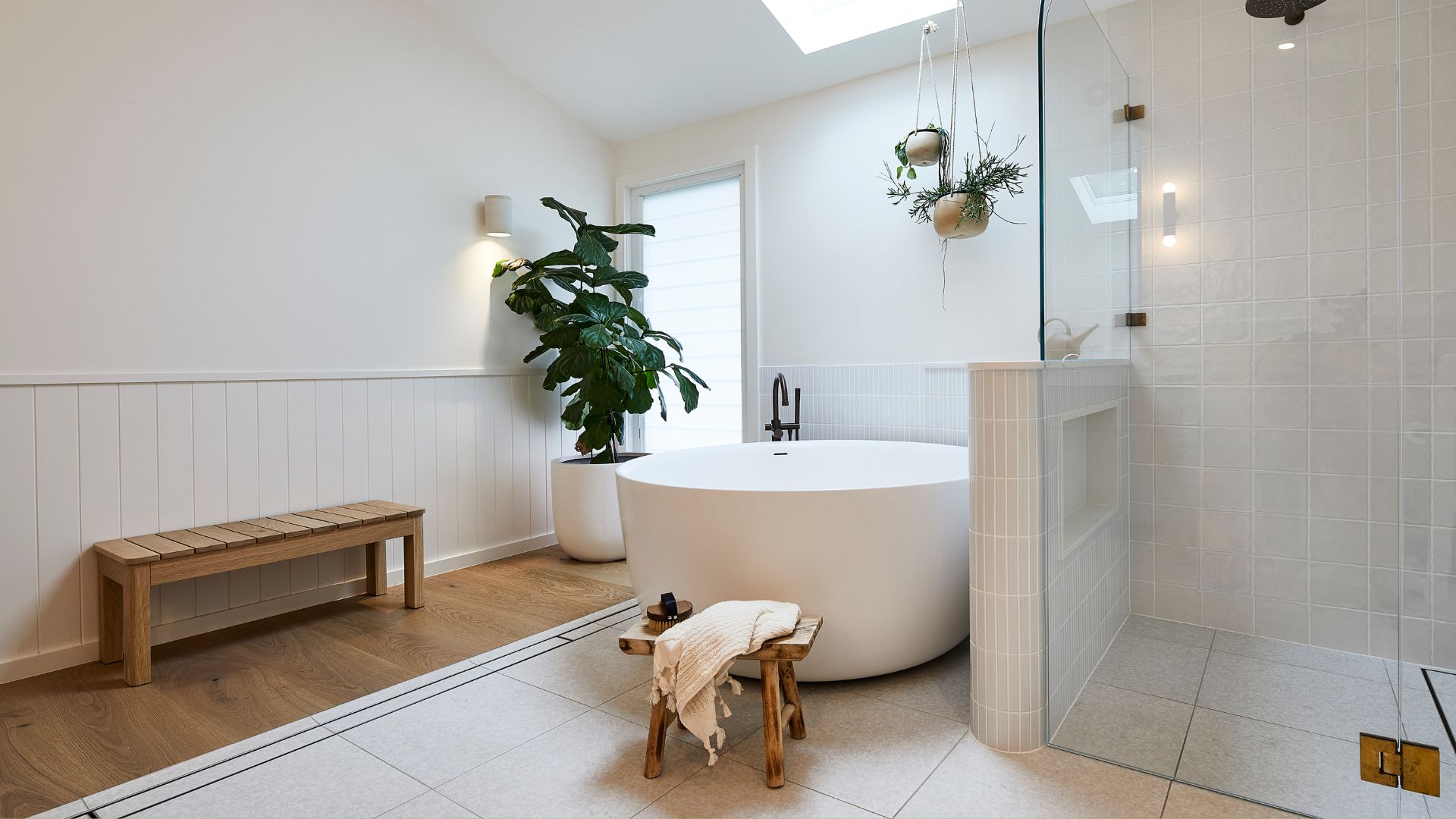

The fiddle leaf fig has become a houseplant staple. Loved for its large, paddle-shaped leaves and tall, upright stature, it's a popular choice for filling empty corners and makes a more compact alternative to the climbing monstera. However, this member of the Ficus family can be fussy, and drooping leaves are a tell-tale sign that your plant needs some TLC.
While it's earned its stripes as one of the most popular houseplants, the fiddle leaf fig isn't the most low-maintenance option out there. They need plenty of bright indirect light, prefer high humidity, and hate extreme temperature fluctuations, which means finding the sweet spot to keep these little trees looking their best is easier said than done.
At the first sign of any imbalance in plant care needs, you'll likely notice drooping leaves on your fiddle leaf fig. While they can be a cause for concern, the good news is not all is lost. If you want to find the root of the problem to help nurse your foliage back to life, here are the common causes that experts want you to be wary of, with some helpful tips on how to fix them.
Why Is My Fiddle Leaf Fig Drooping?

As with most plants, the reason why your fiddle leaf fig is drooping isn't always clear cut. There are a multitude of reasons why your favorite indoor tree could be looking limp (usually a sign that it will soon lose its leaves), but without knowing the exact cause, it's difficult to know how to fix it.
Here are some potential problems experts often see.
1. You've Moved Your Plant
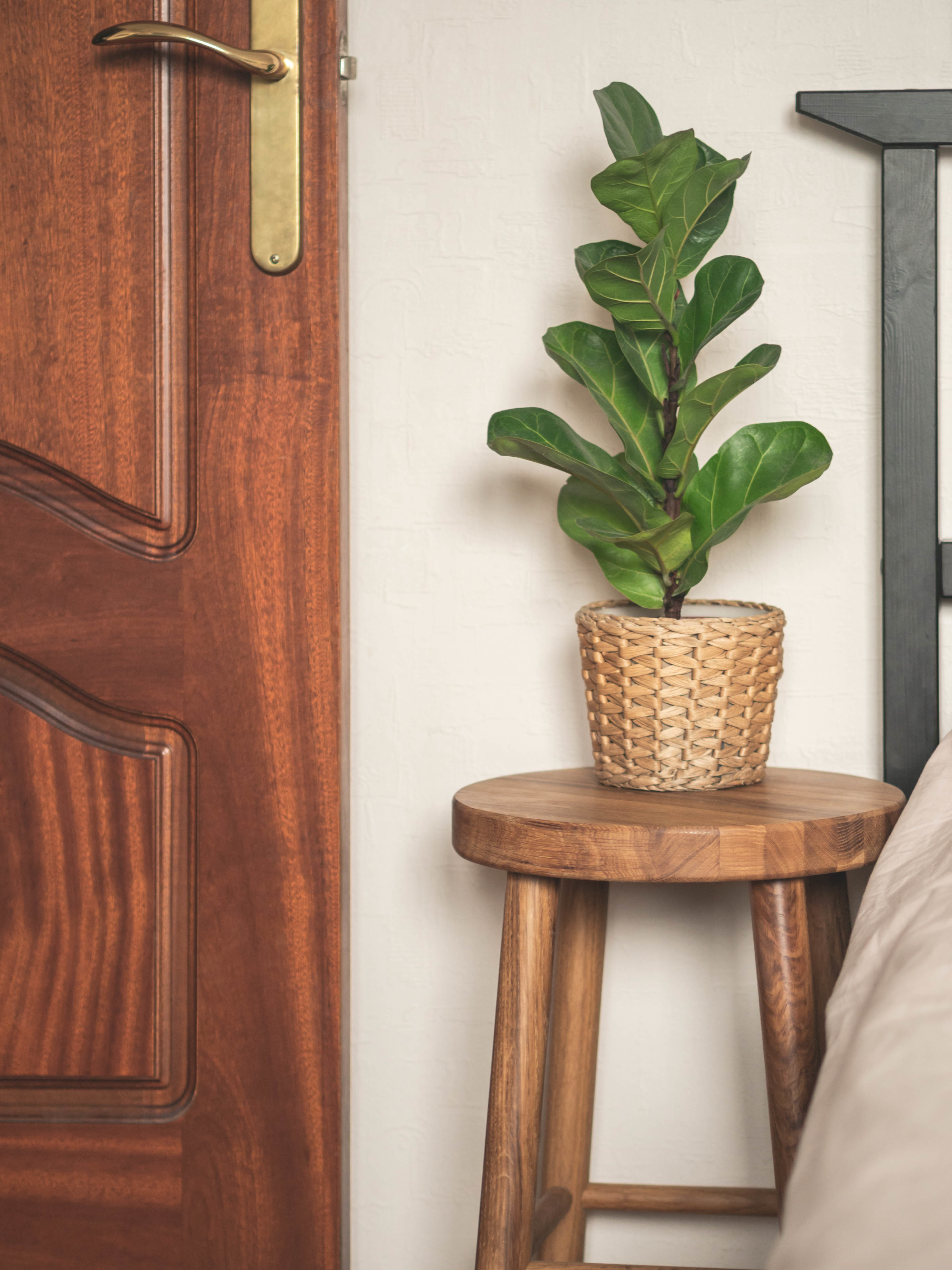
Much like us humans, our houseplants get pretty comfortable with their surroundings. Move them away from their favorite spot and they'll struggle to adjust to changes like light and temperature. While it might not seem drastic, experts say changing the position of your tree is often one of the most common fiddle leaf fig mistakes we can make.
"In nature, plants don’t move from growing environment to growing environment, so it can cause stress," explains Justin Hancock, a horticulturist at Costa Farms. "While the fiddle leaf fig isn’t as notorious for leaf drop as its cousins, big changes can stress it enough to shed a few leaves."
The same can happen when you repot your fiddle leaf, too, even if you haven't changed its position within your home. The good news is, as long as your tree still has preferable growing conditions (those are bright light, adequate water, and a median ambient temperature), your plant will eventually settle and the leaves will perk up again.

Justin Hancock is a horticulturist at Costa Farms where he helps gardeners across to successfully grow and care for a wide variety of plants, from houseplants and tropicals to garden annuals and perennials.
2. It's Undergone Extreme Temperatures
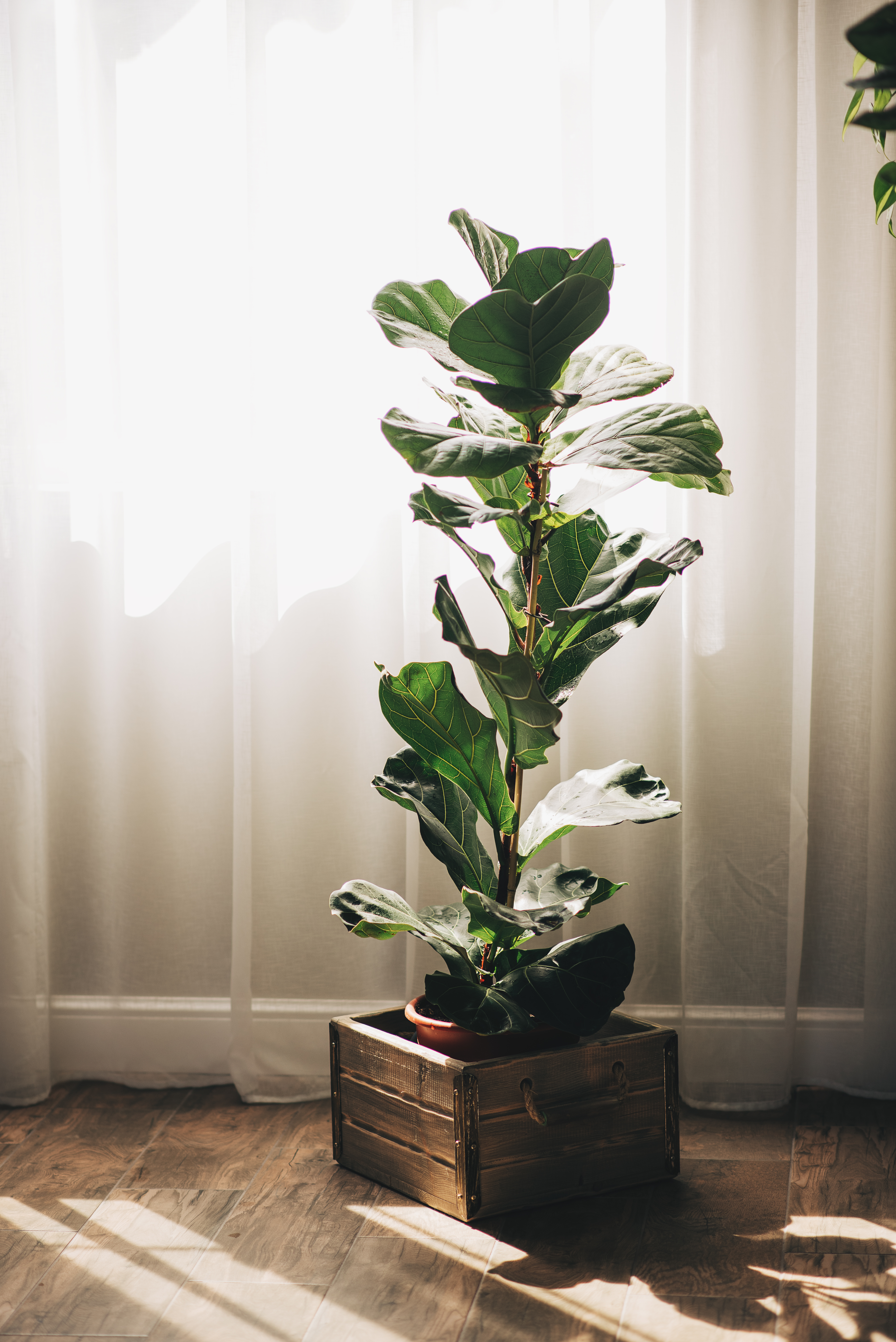
Imagine if someone forced you out of the warm climate of your living room into your freezing cold yard in the middle of winter. That's how your fiddle leaf fig will feel if it's in a draughty part of your home. This leafy plant is native to the Western African rainforests, so it loves warmth and humidity. Move them somewhere too coo,l and they'll react by shutting down, leading to drooping leaves.
It's a common winter houseplant care mistake many plant parents make, and it goes both ways, too. "If it gets particularly hot or cold, it can stress the tree enough for the tree to shed leaves," says Justin, and drooping will be the first sign. "Avoid placing your fiddle leaf fig near heat or cold sources like heating/air conditioning ducts to prevent it."
3. You're Overwatering It
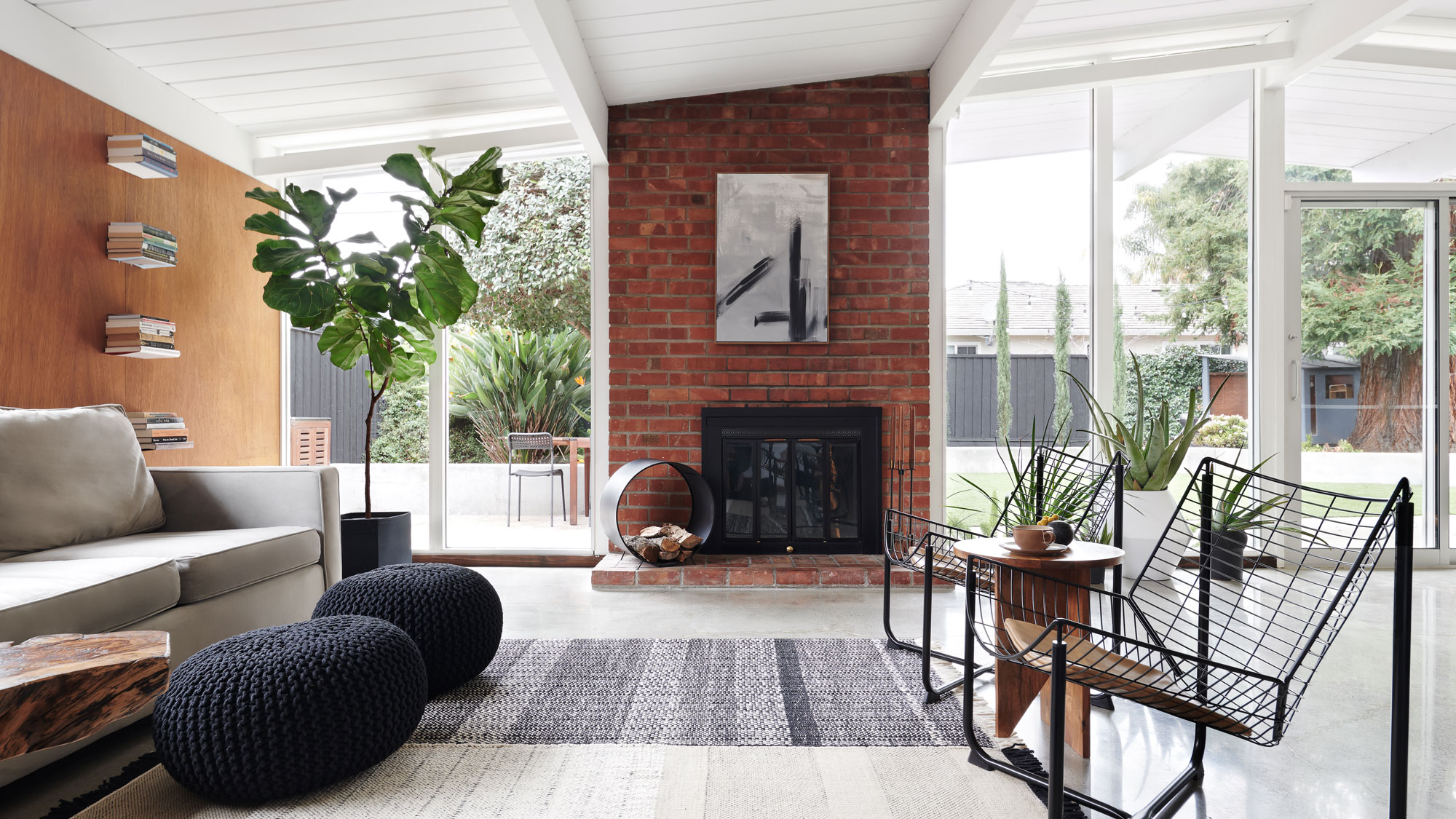
It's hard to miss drooping leaves on a fiddle leaf fig because its foliage is so big. While your first thought might be that your plant is thirsty, it's possible that the opposite is in fact true.
"Overwatering is a popular culprit and usually leads to root rot and drooping leaves," says Tammy Sons, founder and CEO of TN Nursery. Once the root system is affected, your plant doesn't get enough oxygen from the soil, which means mature leaves are often sacrificed.
Luckily fixing overwatered houseplants is easy. "To remedy this, allow your fiddle more time to dry out in between waterings," suggests Paris Lalicata, plant expert at The Sill. "You may even want to increase the light if the plant is too far from a window."
Dial back your regime and closely monitor your plant between each watering to see how it responds. You should also test the soil. Once the first few inches dry out, it's time to give your fiddle leaf a drink. (Weekly watering is usually adequate for a fiddle leaf fig.)

Tammy Sons is a seasoned plant expert and the CEO of TN Nursery, a family-owned business in Altamont, Tennessee, with roots dating back to 1959. Growing up in a nursery family, she developed a deep passion for plants and the environment. Over the years, Tammy has expanded TN Nursery from a modest operation into a thriving enterprise, now encompassing of nearly 400 acres availability and employing numerous local residents.
4. You're Underwatering It

On the other hand, underwatering can also be the cause of drooping fiddle leaf fig leaves. "Water is what gives plants their turgidity so when there isn’t enough water moving through the plant's tissues they begin to droop," says Paris. "This can be remedied by aerating the soil and giving the plant a thorough soak, and adjusting your watering 'schedule' to water the plant before it starts to droop."
If your soil feels dry and there's a gap between the soil and the pot, Justin recommends giving your tree a good soaking in a basin or bath before resuming normal watering. "Don’t keep it too wet to compensate," he says. "Being too dry followed by being too wet is even more harmful to the plant’s health." If at any point you decide to trim some wilting leaves, cut them from the node of the stem. This way you can try to propagate a fiddle leaf fig from the cutting.
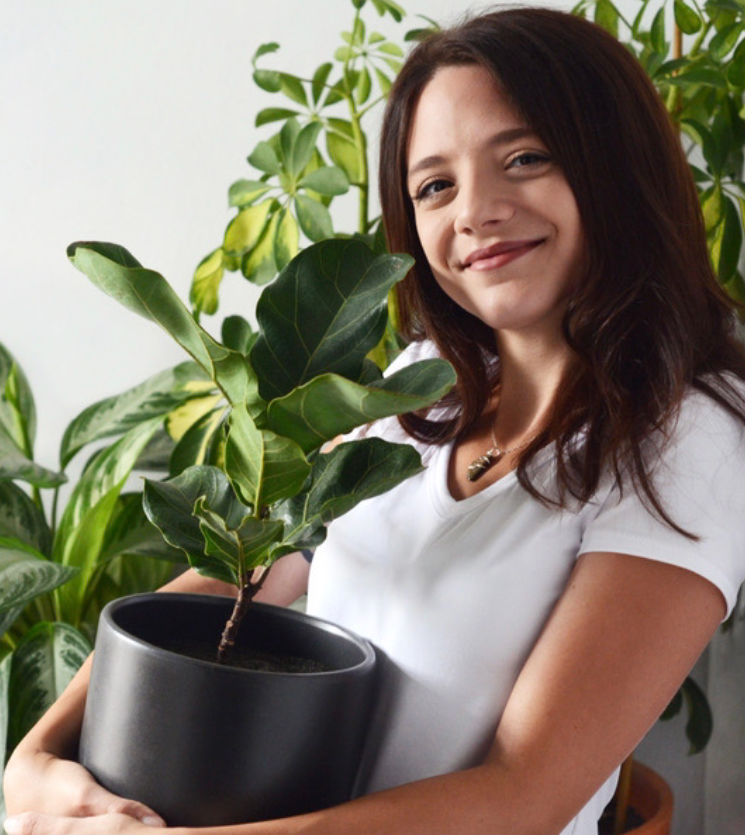
I head up Plant Education and Community here at The Sill where I've been for 5 years now. I am a self-taught plant expert with over ten years of experience growing houseplants and am currently working on becoming a certified sustainable gardener. I currently maintain an indoor garden of over 200 plants in the north east. My passion is making plant care more digestible for budding plant parents, and sharing the many benefits of having plants indoors.
5. It's Not Getting Enough Light

Lastly, a lack of light could be the reason for your droopy leaves. Fiddle leaf figs love bright but indirect light, so they won't be happy in a dark corner of your home, or a basement or hallway without windows.
Even if your fiddle leaf fig gets plenty of light for a few hours each day, it probably won't be enough to keep this high-maintenance houseplant looking its best. "Insufficient light, particularly poor or scattered lighting, will cause strain on the plant," says Tammy.
If none of the above seem likely, Tammy adds that a lack of nutrients could also be a problem. "Fertilizing every couple of months with a balanced fertilizer will help prevent drooping leaves," she says.
FAQs
What does an overwatered fiddle leaf look like?
Besides drooping leaves, a surefire sign that you've been overwatering your fiddle leaf fig is a change in color. Brown spots around the edges or in the center of leaves are a common sign of too much water, as are yellowing leaves. In both cases, this can eventually lead to leaf drop as the plant is unable to supply nutrients up through the stem and into the leaves.
Be wary though, brown spots can also manifest on an under-watered fiddle leaf fig (although in this case, the leaves will likely curl and turn crispy). Use your common sense to reassess your regime and adjust how often you water your houseplants.
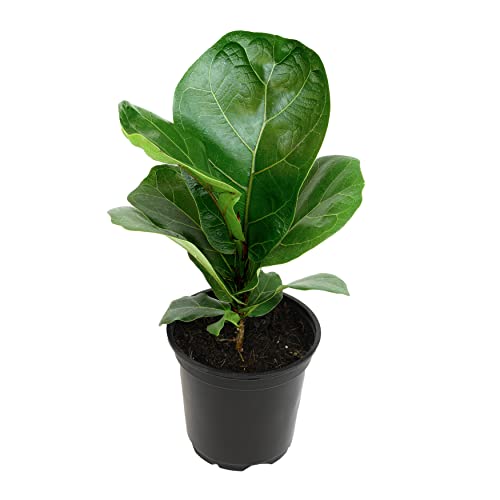
Price: $17
Size: 4" Pot
Fancy nursing a baby fiddle leaf fig to full height? Grow your own indoor tree with this mini plant and test out your plant parenting skills.
With the right care and attention to help remedy drooping leaves, fiddle leaf figs promise to be a gorgeous addition to your indoor garden.
They might be more demanding than other popular houseplants, but what they lack in independence, they certainly make up for in style. If you're looking to double up this precious plant, then why not learn about how you can propagate a fiddle leaf fig — why don't you give it a try and share it with loved ones.
The Livingetc newsletters are your inside source for what’s shaping interiors now - and what’s next. Discover trend forecasts, smart style ideas, and curated shopping inspiration that brings design to life. Subscribe today and stay ahead of the curve.

Lilith Hudson is a freelance writer and regular contributor to Livingetc. She holds an MA in Magazine Journalism from City, University of London, and has written for various titles including Homes & Gardens, House Beautiful, Advnture, the Saturday Times Magazine, Evening Standard, DJ Mag, Metro, and The Simple Things Magazine.
Prior to going freelance, Lilith was the News and Trends Editor at Livingetc. It was a role that helped her develop a keen eye for spotting all the latest micro-trends, interior hacks, and viral decor must-haves you need in your home. With a constant ear to the ground on the design scene, she's ahead of the curve when it comes to the latest color that's sweeping interiors or the hot new style to decorate our homes.
